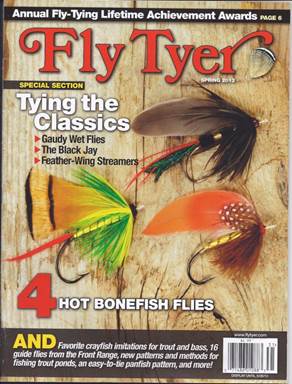ATLANTIC SALMON FLIES – FINDING A NEW CHALLENGE
Introduction:
It's been barely two years since I've been captivated by the world of Atlantic salmon flies. I've never known nor had any subjects like this in my life. First and foremost, it's the art that capture our eyes. Next, regardless of fly-tying skills and involvement, everyone should wonder "how was this created?" or "what are these seldom-seen and gaudy materials?" I finally knocked on the door, not knowing what to see or expect. At the beginning, it was a totally different world from trout flies. I was practically at a loss. Then I met people and books that lighted the passage for me and guided me through. I have learned techniques, materials, and many other nuances. But also my views and personality have been significantly affected. Not just the way I see and think of flies, but I mean as one human being!
I decided to write up my personal endeavor in this immense world along with books that have been guiding me. This series is not meant for "how-to", history reviews, or critiques. Important techniques and knowledge are covered by authors of these books. Along the way, one shall learn the history as well. Every dresser and author has his own style and interpretation. Discussing who is or which book is greater is, to me, not the question. Also, I never mean these books are among the best and all one would need. Indeed I have several more books that I'd like to read in the near future. Overall, I'm always learning and would like to continue learning.
I just hope this series will encourage someone out there who is interested in tying Atlantic salmon flies. Or some of you might have had same experiences as I had and relate to it. By the way, when I look for something related to Atlantic salmon flies by online searches, I often come up with pages out of Fly Anglers OnLine. I encourage FAOL readers to look for them.
Review 1: Fly Tyer – Spring 2013 Issue
Beginning:
Of course I had seen Atlantic Salmon Flies before. Seeing framed displays, words such as gorgeous, flashy, and complicated would be what came to my mind. They were sincerely beautiful and artistic but I never got interested in tying them. Overall, they were wet-flies tied with old (exotic) materials in vivid colors to entice Atlantic salmon, weren't they? I was more interested in tying Steelhead patterns, which are also large wet-flies and are tied for actual fishing not for display. Looking back, though I'd been good with trout flies, I was still developing myself by tying trout flies and fishing with them.
Now I consider I became an accomplished trout fly tyer. I can tie most patterns from tiny midges to 5-inch-long streamers. I even create my own designs and test them. Just out of my house in Livingston, MT, Yellowstone River and spring creeks are running just several miles away. They are my field test stations, as well as some of the most challenging fisheries in North America. Flies tied by me (originals and copy of generic patterns) work on those and surrounding waters. That's a significant proof for what I claim.
By the spring of 2013 I had developed a series of flies that could cover most of the waters in my area. I would seek for new ideas and hope to come up with new designs one at a time. But in terms of fly-tying skills and knowledge, it didn't seem to be much room left for my own growth. I still don't think I was conceited but I must have reached a certain level by then. If you are engaged with one trade or profession and working hard for it, you must have experienced the same situation/feeling. I needed something if I wanted to grow as a fly-tyer.
It was the spring before I became busy with guiding. I dropped by a bookstore in Bozeman with no particular objectives. At an outdoors magazine corner, I browsed a couple of different fly-fishing magazines. Then I picked up Fly Tyer Spring 2013 (www.flytyer.com). In this issue, there are three exclusive articles about classic wet flies. These articles really turned me on. Overall I've been a wet-flies and soft-hackle mania!! One of those articles, tying a Black Jay by Lloyd Lutes, really fascinated me as that was the very first time I saw the tying steps and materials for Atlantic Salmon Flies in details. "Look at this list of materials!" "Wow! Marrying feathers to make wings?" The list went on. I felt that I found a new objective and goal to pursue.
|
Though this is not really a book but just a magazine issue, it is the very first point for me to step into the world of Atlantic Salmon Flies. Other contents in this issue are superb too. If you don't have this issue, hope you can find by a back order.
Satoshi Yamamoto, www.leftyanglerandflies.com, is a guide and a fly-dresser in Livingston, MT.

